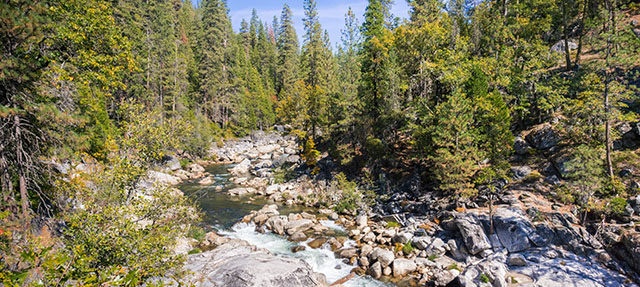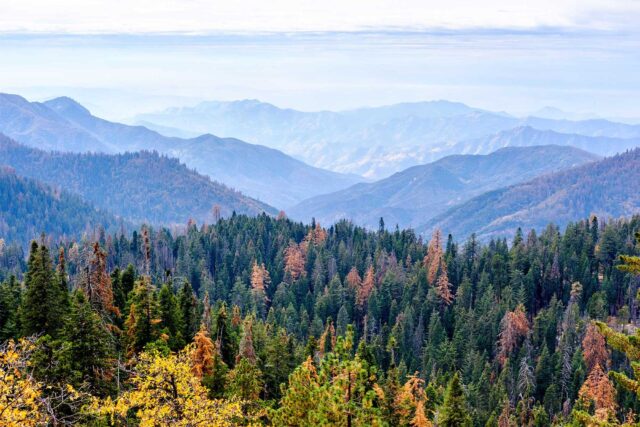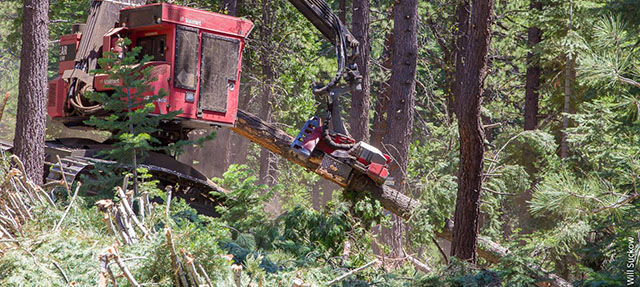The worst wildfire year in California history has prompted new interest in and increased efforts to better manage Sierra forests to improve their resilience to fire, drought, and pests. “It is both a daunting and remarkable time to be engaged in headwater forest management issues,” noted PPIC researcher Henry McCann at a virtual event last week.
McCann summarized PPIC’s new analysis of recent forest stewardship practices on public and private lands in the headwaters region, which shows that the amount of land treated is below what experts say is needed to keep forests healthy.
“This region is critically important to the state’s water grid, as half of the state’s surface water supply originates in these mountains,” McCann said. To maintain the benefits that healthy forests provide will require a major expansion of treatments such as mechanical thinning and the strategic use of fire, which help restore a “mosaic” condition that has greater variety of tree sizes and spacing on the landscape.
A panel of experts moderated by Jeff Mount discussed ways to increase the pace and scale of management of these forests and bring them to a healthier condition.
“Most of California’s forests need more management,” said Keith Gilless, chair of the California Board of Forestry, noting that commercial timber harvest will be an essential part of the effort, at least for the short term. Maintaining forest health and reducing wildfire risk does not lend itself to large clearcuts, however—he said the board encourages sustainable forestry, with an eye toward using revenues from timber sales to pay for broader efforts to improve forest resilience.
The US Forest Service (USFS) owns 60% of the state’s headwater forests, but management of these federal lands has lagged behind privately held forests. Chris Fischer, a deputy director of USFS Region 5, discussed the agency’s commitment to double its rate of forest management—including collaborating with state agencies to carry out a “shared stewardship” program to increase the pace and scale of management of the headwaters.
Angela Avery, executive officer of the Sierra Nevada Conservancy, talked about her group’s work on the Tahoe Central Sierra Initiative, which encompasses a number of large-scale forest stewardship projects, “each of which is testing innovations”—including how to bring in additional investments to maintain forests for the long term. “Working at the regional scale allows us to create efficiencies, and really think about a forest restoration economy,” she said.
In response to an audience question on equity issues and inclusion of tribal knowledge in forest stewardship, Gilless said, “I think the forestry community has a long way to go in figuring out how to incorporate traditional environmental knowledge into the definition of what resilience is”—and in using traditional practices to achieve management goals on the landscape.
Avery described the Sierra Nevada Conservancy’s work with a program to train and equip Native Americans to engage in forest health work across the headwaters region. “Having tribal members on projects is also critical to success, as is embracing tribal knowledge of prescribed fire,” she said.
We invite you to watch the event video.




